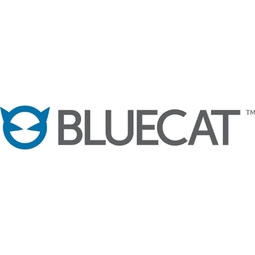The Universität Salzburg Implements a Comprehensive DNS, DHCP and IP Address Management (DDI) Solution with BlueCat

公司规模
Large Corporate
地区
- Europe
国家
- Austria
产品
- BlueCat DNS/DHCP Server
- BlueCat Address Manager
技术栈
- DNS
- DHCP
- IP Address Management
- VMware
实施规模
- Enterprise-wide Deployment
影响指标
- Productivity Improvements
- Digital Expertise
技术
- 基础设施即服务 (IaaS) - 云计算
适用行业
- 教育
适用功能
- 商业运营
用例
- 基础设施检查
- 远程协作
服务
- 系统集成
- 软件设计与工程服务
关于客户
The Paris Lodron Universität Salzburg, founded in 1662, is the largest educational establishment in the city and state of Salzburg, Austria. It has 16,500 students and around 2,700 employees in research, teaching, and administration. In 2004, the university implemented a new organizational structure in accordance with the Universities Act 2002 — the Federal Act on University Organisation and Studies. This act ensured greater autonomy, self-determination, and focus on performance for all Austrian universities. The university's IT department is led by Project Manager Mr. Thomas Wenniger Dipl. Ing. (FH).
挑战
The Universität Salzburg, with 16,500 students and around 2,700 employees, faced a significant challenge when the Universities Act 2002 was implemented, granting greater autonomy and self-determination to Austrian universities. This change necessitated a routine replacement of the hardware for the existing DNS server infrastructure. The university's Project Manager, Mr. Thomas Wenniger Dipl. Ing. (FH), sought the expertise of schoeller network control, a technology distributor with experience in networking and infrastructure. The discussions that followed presented options for a comprehensive DNS, DHCP and IP address management (DDI) solution. BlueCat, a leading provider of DDI solutions, was recommended for evaluation. The university had concerns about replacing Microsoft DNS, but the extensive workflow opportunities offered by BlueCat's DDI products for the allocation and management of IP addresses by the IT helpdesk and network administrators sparked interest.
解决方案
The university proceeded with a test installation of the BlueCat solution, which was completed entirely in a virtual environment. Both BlueCat DNS/DHCP Server (formerly Adonis) and the BlueCat Address Manager (formerly Proteus) were put into operation on the basis of VMware images. They were put through their paces and found to be extremely suitable. The BlueCat solution provided better-suited administration provisions and high availability using clustering technologies. The integrated workflow provided by the BlueCat solution means that the IT Helpdesk and Network Administrators are able to work together perfectly. The unified allocation of names for a wide variety of end devices and address reservation for gateways, servers, and DHCP ranges can also be managed easily. BlueCat Address Manager is a secure and highly scalable management solution with the proven ability to support 600 or more DNS/DHCP instances in a single system.
运营影响
数量效益

Case Study missing?
Start adding your own!
Register with your work email and create a new case study profile for your business.
相关案例.

Case Study
Revolutionizing Medical Training in India: GSL Smart Lab and the LAP Mentor
The GSL SMART Lab, a collective effort of the GSL College of Medicine and the GSL College of Nursing and Health Science, was facing a challenge in providing superior training to healthcare professionals. As clinical medicine was becoming more focused on patient safety and quality of care, the need for medical simulation to bridge the educational gap between the classroom and the clinical environment was becoming increasingly apparent. Dr. Sandeep Ganni, the director of the GSL SMART Lab, envisioned a world-class surgical and medical training center where physicians and healthcare professionals could learn skills through simulation training. He was looking for different simulators for different specialties to provide both basic and advanced simulation training. For laparoscopic surgery, he was interested in a high fidelity simulator that could provide basic surgical and suturing skills training for international accreditation as well as specific hands-on training in complex laparoscopic procedures for practicing physicians in India.

Case Study
IoT platform Enables Safety Solutions for U.S. School Districts
Designed to alert drivers when schoolchildren are present, especially in low-visibility conditions, school-zone flasher signals are typically updated manually at each school. The switching is based on the school calendar and manually changed when an unexpected early dismissal occurs, as in the case of a weather-event altering the normal schedule. The process to reprogram the flashers requires a significant effort by school district personnel to implement due to the large number of warning flashers installed across an entire school district.

Case Study
Implementing Robotic Surgery Training Simulator for Enhanced Surgical Proficiency
Fundacio Puigvert, a leading European medical center specializing in Urology, Nephrology, and Andrology, faced a significant challenge in training its surgical residents. The institution recognized the need for a more standardized and comprehensive training curriculum, particularly in the area of robotic surgery. The challenge was underscored by two independent studies showing that less than 5% of residents in Italian and German residency programs could perform major or complex procedures by the end of their residency. The institution sought to establish a virtual reality simulation lab that would include endourological, laparoscopic, and robotic platforms. However, they needed a simulator that could replicate both the hardware and software of the robotic Da Vinci console used in the operating room, without being connected to the actual physical console. They also required a system that could provide both basic and advanced simulation training, and a metrics system to assess the proficiency of the trainees before they performed surgical procedures in the operating theater.

Case Study
Edinburgh Napier University streamlines long-distance learning with Cisco WebEX
• Geographically dispersed campus made in-person meetings costly and inconvenient.• Distance-learning programs in Malaysia, India, and China required dependable, user-friendly online tools to maximize interaction in collaborative workspaces.• Virtual learning environment required a separate sign-in process, resulting in a significant administrative burden for IT staff and limited adoption of collaboration technology.

Case Study
8x increased productivity with VKS
Before VKS, a teacher would spend a lot of time showing a group of 22 students how to build a set of stairs within a semester of 120 hours. Along with not leaving the teacher much time to provide one-on-one support for each student to properly learn carpentry, it also left a considerable amount of room for error. Key information would be misinterpreted or lost as the class was taught in the typical show-and-tell way.

Case Study
Scalable IoT Empowering GreenFlex's Sustainable Growth
GreenFlex, a company that supports sustainable development, decarbonization, and energy efficiency, faced several challenges in its quest to expand its business. The company needed to deploy a robust and sustainable IoT technology to support its growth. It was crucial for them to monitor and control devices at customer sites in a safe and reliable manner. They also needed to integrate devices across a range of communication protocols and gather and act on data to meet efficiency targets. GreenFlex had previously built IoT capabilities into its digital platform, GreenFlexIQ, to monitor and manage customer sites remotely. However, they soon realized that they needed a new platform to support their ambitions. They needed a platform that could scale to connect more devices for production management and make it easier for the operations team to manage devices in the field.






